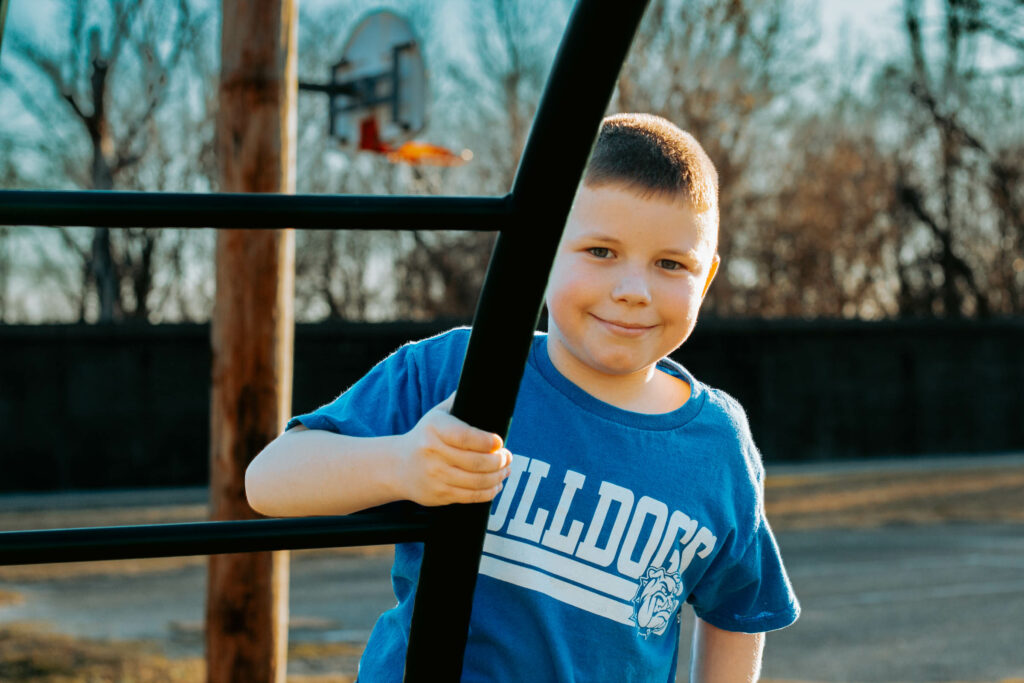The message is simple:
An adolescent brain is simply not as mature as an adult brain.
In fact, the human brain does not fully mature until a person is in their twenties, sometimes even as late as 27 years old, with the frontal and pre-frontal cortex maturing last, which is, coincidentally, the part of the brain that controls judgment. Until then, the brain primarily works on instinct.
Dr. Patrick Withrow, director of outreach for Baptist Health Paducah, is on a mission to spread this simple message to as many young people in the region as possible.
“Any decision that an adolescent makes is basically instinctual at this point and for them to know that, they might be better off, so whenever they make a make a decision, they know that they should take a little more time,” he says.
“I believe that knowledge is power and knowing that making decisions with a immature brain is like playing cards without a full deck.”
Dr. Withrow has teamed up with Anthony Copeland, a member of the Paducah Police Department, and Matt Lacefield, himself a recovering opioid addict, and the group is attempting to reach as many students as possible with this message through presentations at area schools. He estimates that they have already reached close to 2,000 eighth graders and the group has a waiting list of schools still to visit.
During his presentation, Dr. Withrow shares brain scans and a human brain specimen with students to help them fully understand the development stages and why, without a fully-formed pre-frontal cortex, some adolescents seem to be in a heightened state of emotional chaos, are prone to risk-taking or thrill-seeking and can experience a lack of discipline or self-control.
It is these factors that can often lead to a teenager attempting or committing suicide with what Dr. Withrow calls, “little forethought.”
“Very frequently, adolescents who are going to commit suicide don’t give it a bit of forethought,” he says.
“They don’t think about the finality of what they are going to do.”
Wendy Lay, director of children’s services at Four Rivers Behavioral Health, believes this is why oftentimes parents and close friends are so surprised by a teenager’s suicide or suicide attempt.
“Adolescents, by their nature, are very impulsive, so something very wrong can happen very quickly,” she says.
“I don’t think parents are not observant or in tuned to their kids, but it’s one thing that happens sometimes that is so huge that they very impulsively take some a negative action.”
In addition to helping to raise awareness about suicide, Dr. Withrow and his group hopes that their information will also help further curb the number of adolescents who use illegal drugs in our region, a factor in many suicides or suicide attempts for this age group.
According to the Center for Application of Prevention Technologies, nearly 95% of those with a mental health issue or history of substance abuse will not complete a suicide. However, 90% of those who die by suicide have a mental health or substance abuse problem.
In Kentucky, the Purchase Region tracks as much as 20 percent higher than the state as it relates to suicide. And, even more alarming, the Purchase Area saw a more than 40 percent increase in suicide completions from 2013 to 2014.
The reason why some teens turn to substance abuse in the first place may very well be linked to their brain development, according to Wendy.
“Adolescents sometimes can be in a position where they believe, ‘if something bad happens to me and I feel very sad and I don’t want to feel sad anymore, then one of the most easily accessible things is for me to get high, so that changes the way that I feel.”
“Maybe I don’t feel better, but I just feel different.”
For Dr. Withrow, an adolescent turning to drugs or substances as a way to help manage their anxiety or depression is a dire outcome.
“Adolescents are playing with fire when they are using drugs with an adolescent brain because they can inhibit or arrest the maturation of the brain,” he cautions.
Students who participate in Dr. Withrow’s presentation are given tests, which show positive effects of the messages they are hearing.
“We know the kids are getting what we are telling them,” Dr. Withrow explains of the test results.
“There is not long-term data on outcomes yet, but I’m convinced this is helping.”
Dr. Withrow is not alone in his confidence either. He recently received a thank you letter following a presentation from Dr. Karen Hlinka, dean of the Science and Mathematics Division at West Kentucky Community and Technical College System, which included the following praise:
This is a prevalent social issue that impacts so many people in our community and our state. Yet, our young people do not often get a sense for the importance of managing their behaviors and lifestyles to make healthy choices. I appreciated the neurophysiology included in your presentation. Making that concrete connection between the science behind drug abuse and the devastating long-term effects it can have, had a powerful impact.
The Regional Prevention Center at FRBH focuses on substance abuse and suicide prevention at a community level using a holistic approach.
“Just telling kids that drugs are bad for them is not enough. We believe that kids already know that. There is so much more to it,” says Ellen Walsh, director of FRBH prevention services.
“We focus on getting coalitions to engage in environmental strategies that affect the long term. We need to change the social norms around substance abuse use.”
For example, with prescription drugs, a primary concern for Prevention is ridding households of unnecessary or expired prescription by providing regional Sherriff’s offices with take-back programs and permanent disposal boxes for those drugs.
It’s also why FRBH is currently engaged in a community readiness survey around suicide prevention. The survey measures the degree to which a community is prepared to action on the issue.
It is the first survey of its kind in our region and one that Ellen says can’t complete quick enough. Armed with the results, her office can get to work meeting communities where they are with the information they need to prevent suicide.
While it may be difficult to determine the causes of suicide or substance abuse in teenagers, perhaps the old adage, “An ounce of prevention is worth a pound of cure” rings true.






